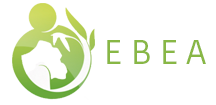
Animal Welfare Assessment


How to assess animal welfare?
While good physical health is essential to an animal's welfare, it is insufficient. Indeed, welfare depends on the animal's subjective experiences (emotions) and its perception of its environment. Since well-being a mental state and it cannot be directly measured, the assessment of animal welfare uses a series of indicators based on the physical and social environment (enclosures, facilities, social group, etc.) as well as the animal itself (its behavior, health, etc.). Finally, animal welfare assessment uses a comparative approach based on reference values. Indeed, it is essential to know what is biologically "normal" for a species or an individual to assess its welfare. It is, therefore, necessary to collect information from the literature on the biology of the species (physiological standards, time budget, etc.) and to carry out long-term monitoring to be able to identify any possible degradation or improvement of an animal's state of welfare.
Measuring animal welfare
a comparative approach
Welfare assessments are based on a comparative approach. It requires reference values to know whether what we observe is “normal” for an individual of a particular species. It also requires a first state of play to then assess the effectiveness of the measures put in place on the state of animal welfare. Two reference levels will therefore be used for the comparative approach:
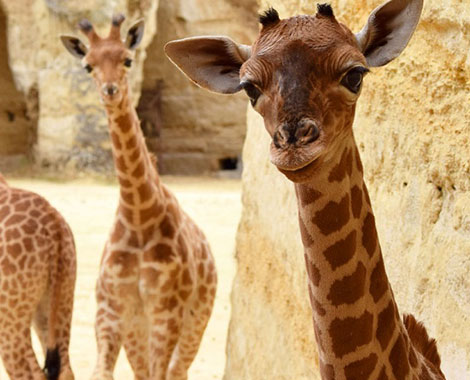

The species
The objective of this first level of comparison is to know if the individual presents a physiology and a behavior specific to its species. Scientific studies, particularly in the natural environment, have made it possible to define standard values for physiological parameters (e.g. hormone levels, blood test, weight, etc.) as well as the behavioral repertoire and time budget (time spent eating, walking, playing, resting, etc.) of a vast majority of species which can today be used as reference values for animals in captivity. For example, behaviors observed in a captive environment but absent from the natural environment (e.g. stereotypies) or in a significantly different frequency (e.g. rest/inactivity) are indicators of an inadequate environment and a potentially degraded state of welfare.
The individual
The objective of this second level of comparison is to know if something changed compared to the previous evaluation. It can be behavioral changes (e.g. the animal spends more time sleeping and less time grooming) or physical changes (e.g. weight gain). This level of comparison allows knowing whether the state of the animal changes over time, and therefore to assess the effectiveness of any measures put in place to guarantee the individual's welfare.
In practice it is then a question of carrying out regular monitoring in order to measure whether the values obtained correspond to what is known. It is the variation of these values that will make it possible to identify deterioration or improvement in the state of welfare of an animal. A welfare assessment can be based on questionnaires (completed by the animal team or neutral observers) and/or direct behavioral observations. Behavioral changes are indeed among the first indicators of a state of ill-being. Ethology (the science that studies animal behavior) and its methodology prove to be valuable complementary tools for veterinary monitoring.
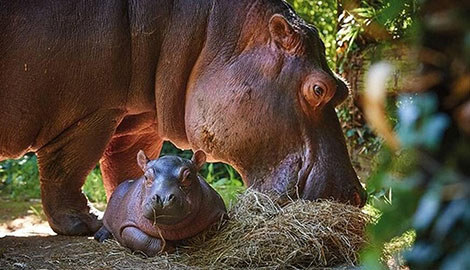
The multi-dimensional aspect of animal welfare makes its assessment and monitoring very complex. Consequently, and for more than 50 years, scientists have worked to create different models to synthesize and clarify the different factors that can influence an animal's welfare. Several protocols have been developed to provide individual, objective and quantified measures of the welfare of animals housed in captivity. Since it is a mental state and cannot be directly measured, these protocols use:
- Measures related to animals
- Measures related to the environment in which the animal is located
What is the
5 domains model?
The best known and most widely used model is called the 5 domains model. In 1994, Professor Mellor and his team proposed a new approach to animal welfare based on5 freedoms.This new model is organized around 4 physical and functional domains - nutrition, environment, health and behavior - which all together influence a 5th domain, the mental state. In 2020, the model is again updated to take into account the quality of human-animal relationships by including them in the "behavior" domain: we are talking not only about the behaviors expressed by the animal but also about behavioral interactions (with humans, congeners, etc.).
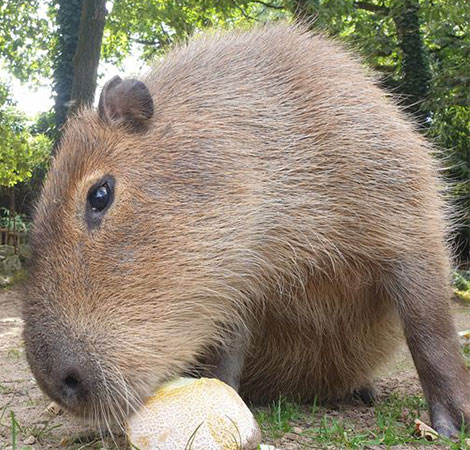

The innovative approach of the 5 domains model is the central place it gives to the emotional state within the definition of welfare. The latter does not only depend on the environmental elements and the use that the animal makes of them, but also on its subjective perception of the situation. Thus for each impacted physical element (e.g. restricted space), there can be an associated emotion (ex: frustration, boredom, etc.). Consideration of emotional needs is therefore just as important as that of physical needs.
Historically, we spoke of welfare when the animal was not in negative situations (e.g. absence of hunger, absence of pain). However, such an approach does not guarantee a positive state of welfare, but at best a neutral state. To provide animals with “a life worth living”, those who care for them must therefore ensure that they provide positive experiences, both mental and physical. The Five Domains model includes a scoring system to assess the presence, intensity and duration of negative effects but also the presence and quality of the opportunities the animal has to live positive experiences.
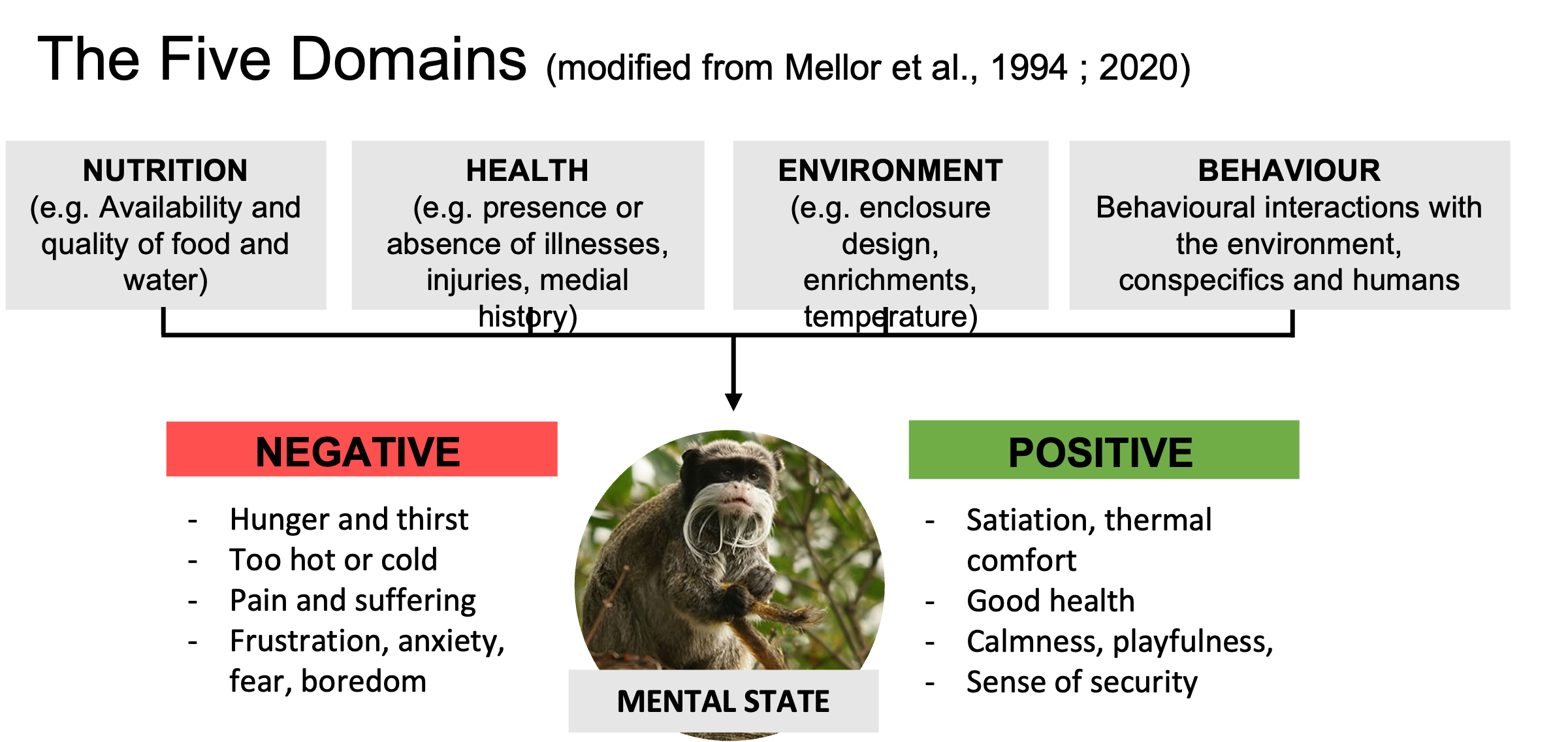
The strength of this model is to require behavioral and physical indices of welfare based on validated scientific evidence. The wide range of identified states to consider and the configuration of the 5 domains designed specifically to clarify the probable origin of these negative or positive states allows welfare assessments based on this model to be structured, systematic, comprehensive and understanding. For this reason and since its publication, it has been widely adopted for the evaluation of the impact of scientific protocols, breeding or any other situation where humans intervene in the life of animals. In particular, it inspired the Welfare Quality® protocol, which was developed to assess the welfare of farm animals.
What is
the Welfare Quality® assessment?
The European Welfare Quality® project aims to respond to growing societal concern regarding the welfare of farmed animals (Veissier et al., 2010). This concern calls for assessment systems that allow producers to get an idea of the level of welfare they provide to the animals in their care and consumers to get an idea of the welfare of the animals they buy products from. Developed since 2009, the Welfare Quality® assessment protocol is inspired by the 5 domains model and is based on four main principles formulated to communicate a key issue in welfare: good food, good housing, good health and appropriate behavior. They correspond to the following questions: Are the animals properly fed and watered? Are the animals properly housed? Are the animals healthy? Does animal behavior reflect positive emotional states?



Grid of criteria used in Welfare Quality® in dairy cattle. According to Welfare Quality ® (2009) Assessment protocol for cattle. Welfare Quality® Consortium, Lelystad, Netherlands.
The interest of the Welfare Quality® project is based on the development of standardized methods for evaluating animal welfare and the integration of this information in the form of a score in order to allow farms to be classified according to 4 categories ranging from from insufficient to excellent. One of the innovations of the Welfare Quality® Animal Welfare Rating System is that it focuses more on animal-based measures (for example, those directly related to the body condition of the animal). animal, health aspects, injuries, behavior, etc.) than those based on the environment. The measures retained in the Welfare Quality® protocol were chosen based on 3 essential criteria:
- Their validity (does the measure reflect an aspect of real animal welfare) - Their reliability (repeatable on a large number of animals) - Their feasibility (on the field).
Thus, in practice, the evaluator (the breeder and/or a scientist) counts or classifies the animals according to a simple series of categories illustrated by images or video clips, in order to limit judgment biases. Furthermore, this protocol is regularly updated according to scientific knowledge. The Welfare Quality® protocol was developed for equines, sheep, goats, cattle, pigs and turkeys.
Which protocol for
The EBEA framework ?
The protocol used in the EBEA approach is based on the 5-domain model and has transposed the approach of the Welfare Quality® project to wildlife species, to assess the welfare of animals present in zoos. Similarly to the 5 domains model and the "Welfare Quality®" tool, it is essential to adapt the animal welfare assessment protocol to the specificities of the species. Thus, although the question are the same, the proposed answers will be different whether it is a marmoset, a bald ibis or an okapi. Nevertheless, the questions are factual, descriptive and accompanied by images and illustrative videos to facilitate the assessment. The protocol combines both a questionnaire and behavioral observations. This questionnaire includes approximately 80 questions related to 4 domains (housing, food, health and behavior) in order to report on the living conditions offered to the animal. The observation sessions use detailed ethograms (list of possible behaviors of a species) and make it possible to objectively quantify the behavior of the animal in its daily life. The questionnaires and the observations are available in the same mobile application, which not only saves time during the evaluation (all the answers are directly recorded and analyzed) but also enable the inclusion of the entire team: each can download the app to their phone and complete the assessment at any time of the day. The results are presented by category, on a scale from 0 to 100%. The approach is based on a scientific approach to animal welfare and is constantly evolving according to the latest knowledge.
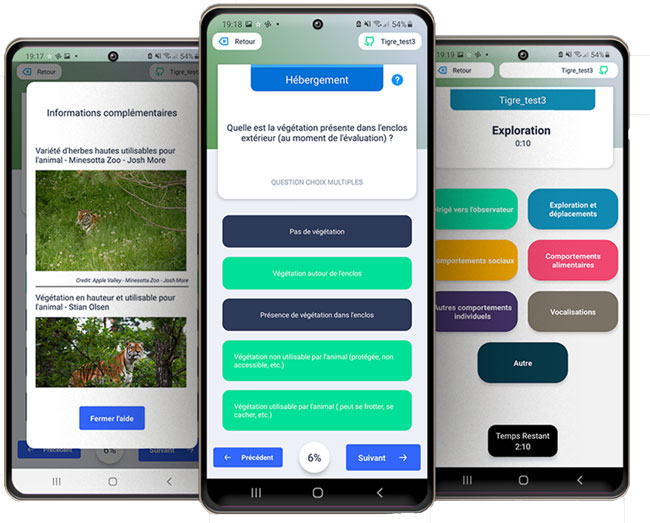
Example of a question used in the welfare assessment. The multimedia resources offered are adapted according to the questions and species concerned. Source : Welfare Monitor – developed by the AKONGO Team.
The protocol combines both a questionnaire and behavioral observations. This questionnaire includes approximately 80 questions relating to 4 areas (housing, food, health and behavior of the animal) in order to report on the living conditions offered to the animal. The observation sessions use detailed ethograms (list of possible behaviors of a species) and make it possible to objectively quantify the behavior of the animal in its daily life.
The questionnaires and the observations are available in the same mobile application, which not only saves time during the evaluation (all the answers are directly recorded and analyzed) but also to include the whole team in this follow-up: each can download the app to their phone and complete the assessment at any time of the day. A team of independent ethologists also carry out the assessments to ensure the objectivity of the measurements. The results are presented by category, on a scale from 0 to 100%. The approach is based on a scientific approach to animal welfare and is constantly evolving according to the latest knowledge.
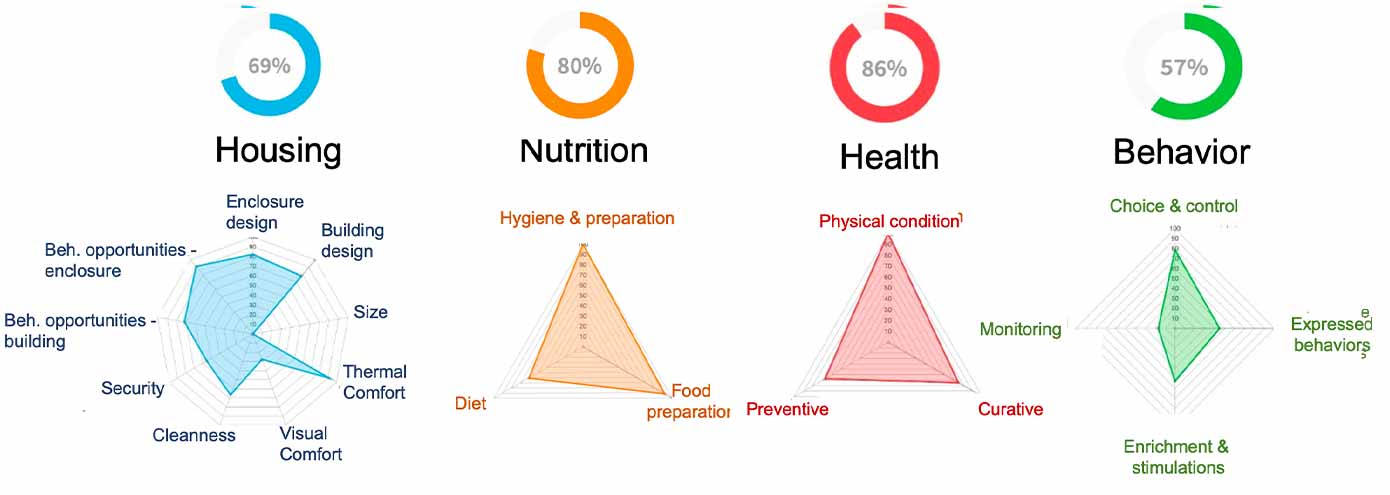
Example of results obtained. The sub-categories make it possible to quickly identify the points to improve in priority. Source : Welfare Monitor – developed by the AKONGO Team.
111
Committed professionals
380
Animals monitored
610
Assessments carried out
532
Total observation hours
References et ressources
Welfare Quality ® (2009) Assessment protocol for cattle. Welfare Quality ® Consortium, Lelystad, Netherlands.
